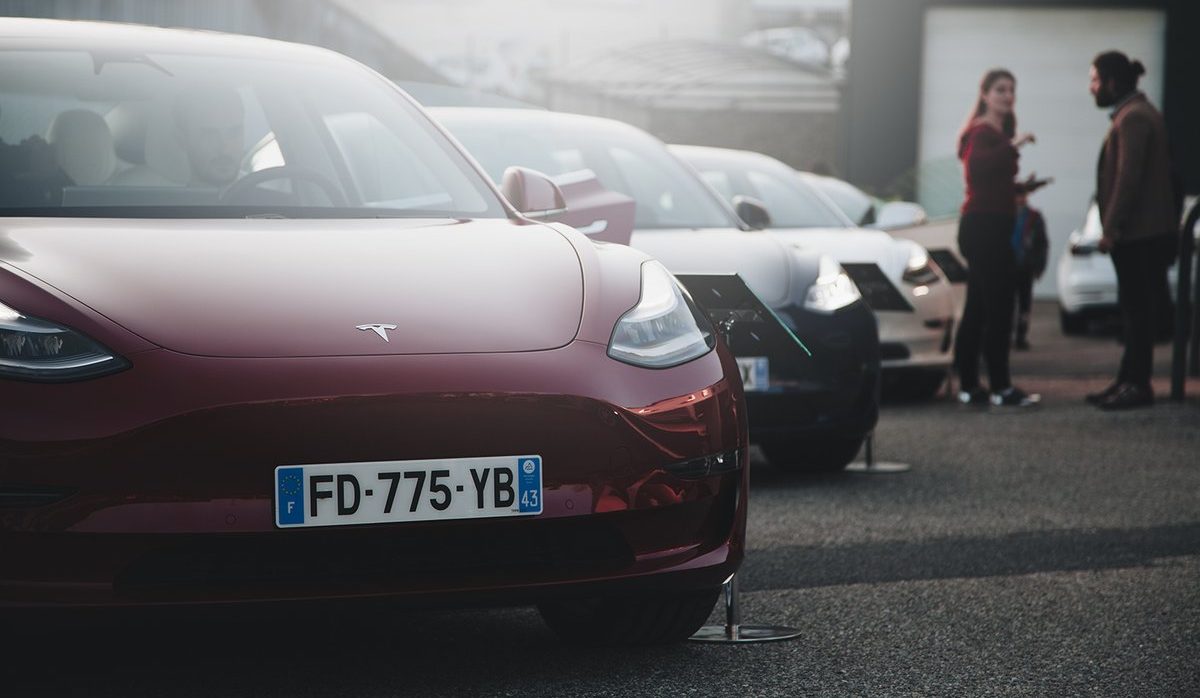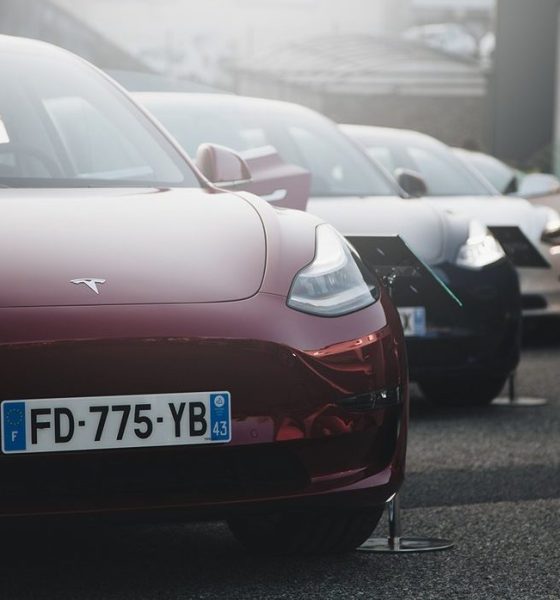

News
Tesla’s Standard Model 3 is coming to Europe in 6 months, China in 6-8 months
Elon Musk has provided a quick update about the Model 3’s international ramp on Thursday, posting his estimates for the availability of the Standard and Standard Plus versions of the electric sedan in Europe and China. Musk also posted a reminder about the affordable Model 3’s price, which will be adjusted depending on country-specific taxes.
Sharing his thoughts on Twitter, Musk stated that he expects the base Model 3 to be available in Europe in around 6 months. The Tesla CEO also stated that the affordable Model 3 should be available for the Chinese market in 6-8 months, provided that Gigafactory 3’s electric car production begins on time.
Base Model 3 available in Europe in ~6 months, Asia 6 to 8 months. Latter contingent on Shanghai Gigafactory. Country-specific taxes & import duties mean price may be 25% or more above US number.
— Elon Musk (@elonmusk) March 1, 2019
Elon Musk’s estimated timeframe for the European and Chinese launch of the Model 3’s affordable versions bodes well for Tesla’s capability to produce and support an ever-growing ramp for the electric sedan. Considering that Tesla was able to introduce the $35,000 Model 3 earlier than expected, it appears that the company is now at a point where it can comfortably meet the production demands of the vehicle despite offering versions that cater to a much larger demographic.
It should be noted that the Model 3 is designed to be a mass-market electric car that can be competitive in price against ubiquitous passenger cars like the Toyota Camry and the Honda Accord. Since starting Model 3 production in 2017, skeptics have pointed at the vehicle’s price as a point of criticism against Tesla, especially considering that the first versions offered by the company were closer to $50,000 than Elon Musk’s target $35,000 price (the Long Range RWD Model 3, for one, was initially offered at $49,000 before incentives or add-ons). Eventually, the $35,000 Model 3 even became a favored point among Tesla bears on social media, when highlighting the company’s “broken promises” about the electric sedan. The recent launch of the Standard and Standard Plus Model 3 ultimately topples this bear thesis.
Model 3s now available
Standard Range: 220mi, $35k
Standard Range Plus: 240mi, $37k
Mid Range: 264mi, $40k
Long Range: 325mi, $43k
Long Range AWD: 310mi, $47k
Performance AWD: 310mi, $58k, 0-60 mph in 3.2s!
https://t.co/RNnGdonjSr(prices before incentives)
— Tesla (@Tesla) March 1, 2019
Tesla appears to be preparing itself for a massive influx of orders for the Model 3’s Standard and Standard Plus versions. Before launching the two new Model 3 variants, Tesla registered large groups of RWD Model 3 VINs. So far this quarter, Tesla had filed over 49,000 RWD Model 3 registrations, a significant number of which is likely intended for the US market (Europe only gets AWD vehicles for now, while the Long Range RWD version is available in China).
Tesla took the electric car community by surprise when it launched the $35,000 Standard Model 3 on Thursday. The company has been quite conservative about its updates on the affordable Model 3’s release date, with Musk not even giving an estimated timeframe for the vehicle in the fourth quarter earnings call. With deliveries of the Standard and Standard Plus Model 3 expected to begin within the next few weeks, Tesla’s end-of-quarter push this Q1 2019 will likely be the company’s most compelling yet.

Elon Musk
Elon Musk and Tesla AI Director share insights after empty driver seat Robotaxi rides
The executives’ unoccupied tests hint at the rapid progress of Tesla’s unsupervised Robotaxi efforts.

Tesla CEO Elon Musk and AI Director Ashok Elluswamy celebrated Christmas Eve by sharing personal experiences with Robotaxi vehicles that had no safety monitor or occupant in the driver’s seat. Musk described the system’s “perfect driving” around Austin, while Elluswamy posted video from the back seat, calling it “an amazing experience.”
The executives’ unoccupied tests hint at the rapid progress of Tesla’s unsupervised Robotaxi efforts.
Elon and Ashok’s firsthand Robotaxi insights
Prior to Musk and the Tesla AI Director’s posts, sightings of unmanned Teslas navigating public roads were widely shared on social media. One such vehicle was spotted in Austin, Texas, which Elon Musk acknowleged by stating that “Testing is underway with no occupants in the car.”
Based on his Christmas Eve post, Musk seemed to have tested an unmanned Tesla himself. “A Tesla with no safety monitor in the car and me sitting in the passenger seat took me all around Austin on Sunday with perfect driving,” Musk wrote in his post.
Elluswamy responded with a 2-minute video showing himself in the rear of an unmanned Tesla. The video featured the vehicle’s empty front seats, as well as its smooth handling through real-world traffic. He captioned his video with the words, “It’s an amazing experience!”
Towards Unsupervised operations
During an xAI Hackathon earlier this month, Elon Musk mentioned that Tesla owed be removing Safety Monitors from its Robotaxis in Austin in just three weeks. “Unsupervised is pretty much solved at this point. So there will be Tesla Robotaxis operating in Austin with no one in them. Not even anyone in the passenger seat in about three weeks,” he said. Musk echoed similar estimates at the 2025 Annual Shareholder Meeting and the Q3 2025 earnings call.
Considering the insights that were posted Musk and Elluswamy, it does appear that Tesla is working hard towards operating its Robotaxis with no safety monitors. This is quite impressive considering that the service was launched just earlier this year.
Elon Musk
Starlink passes 9 million active customers just weeks after hitting 8 million
The milestone highlights the accelerating growth of Starlink, which has now been adding over 20,000 new users per day.

SpaceX’s Starlink satellite internet service has continued its rapid global expansion, surpassing 9 million active customers just weeks after crossing the 8 million mark.
The milestone highlights the accelerating growth of Starlink, which has now been adding over 20,000 new users per day.
9 million customers
In a post on X, SpaceX stated that Starlink now serves over 9 million active users across 155 countries, territories, and markets. The company reached 8 million customers in early November, meaning it added roughly 1 million subscribers in under seven weeks, or about 21,275 new users on average per day.
“Starlink is connecting more than 9M active customers with high-speed internet across 155 countries, territories, and many other markets,” Starlink wrote in a post on its official X account. SpaceX President Gwynne Shotwell also celebrated the milestone on X. “A huge thank you to all of our customers and congrats to the Starlink team for such an incredible product,” she wrote.
That growth rate reflects both rising demand for broadband in underserved regions and Starlink’s expanding satellite constellation, which now includes more than 9,000 low-Earth-orbit satellites designed to deliver high-speed, low-latency internet worldwide.
Starlink’s momentum
Starlink’s momentum has been building up. SpaceX reported 4.6 million Starlink customers in December 2024, followed by 7 million by August 2025, and 8 million customers in November. Independent data also suggests Starlink usage is rising sharply, with Cloudflare reporting that global web traffic from Starlink users more than doubled in 2025, as noted in an Insider report.
Starlink’s momentum is increasingly tied to SpaceX’s broader financial outlook. Elon Musk has said the satellite network is “by far” the company’s largest revenue driver, and reports suggest SpaceX may be positioning itself for an initial public offering as soon as next year, with valuations estimated as high as $1.5 trillion. Musk has also suggested in the past that Starlink could have its own IPO in the future.
News
NVIDIA Director of Robotics: Tesla FSD v14 is the first AI to pass the “Physical Turing Test”
After testing FSD v14, Fan stated that his experience with FSD felt magical at first, but it soon started to feel like a routine.

NVIDIA Director of Robotics Jim Fan has praised Tesla’s Full Self-Driving (Supervised) v14 as the first AI to pass what he described as a “Physical Turing Test.”
After testing FSD v14, Fan stated that his experience with FSD felt magical at first, but it soon started to feel like a routine. And just like smartphones today, removing it now would “actively hurt.”
Jim Fan’s hands-on FSD v14 impressions
Fan, a leading researcher in embodied AI who is currently solving Physical AI at NVIDIA and spearheading the company’s Project GR00T initiative, noted that he actually was late to the Tesla game. He was, however, one of the first to try out FSD v14.
“I was very late to own a Tesla but among the earliest to try out FSD v14. It’s perhaps the first time I experience an AI that passes the Physical Turing Test: after a long day at work, you press a button, lay back, and couldn’t tell if a neural net or a human drove you home,” Fan wrote in a post on X.
Fan added: “Despite knowing exactly how robot learning works, I still find it magical watching the steering wheel turn by itself. First it feels surreal, next it becomes routine. Then, like the smartphone, taking it away actively hurts. This is how humanity gets rewired and glued to god-like technologies.”
The Physical Turing Test
The original Turing Test was conceived by Alan Turing in 1950, and it was aimed at determining if a machine could exhibit behavior that is equivalent to or indistinguishable from a human. By focusing on text-based conversations, the original Turing Test set a high bar for natural language processing and machine learning.
This test has been passed by today’s large language models. However, the capability to converse in a humanlike manner is a completely different challenge from performing real-world problem-solving or physical interactions. Thus, Fan introduced the Physical Turing Test, which challenges AI systems to demonstrate intelligence through physical actions.
Based on Fan’s comments, Tesla has demonstrated these intelligent physical actions with FSD v14. Elon Musk agreed with the NVIDIA executive, stating in a post on X that with FSD v14, “you can sense the sentience maturing.” Musk also praised Tesla AI, calling it the best “real-world AI” today.








